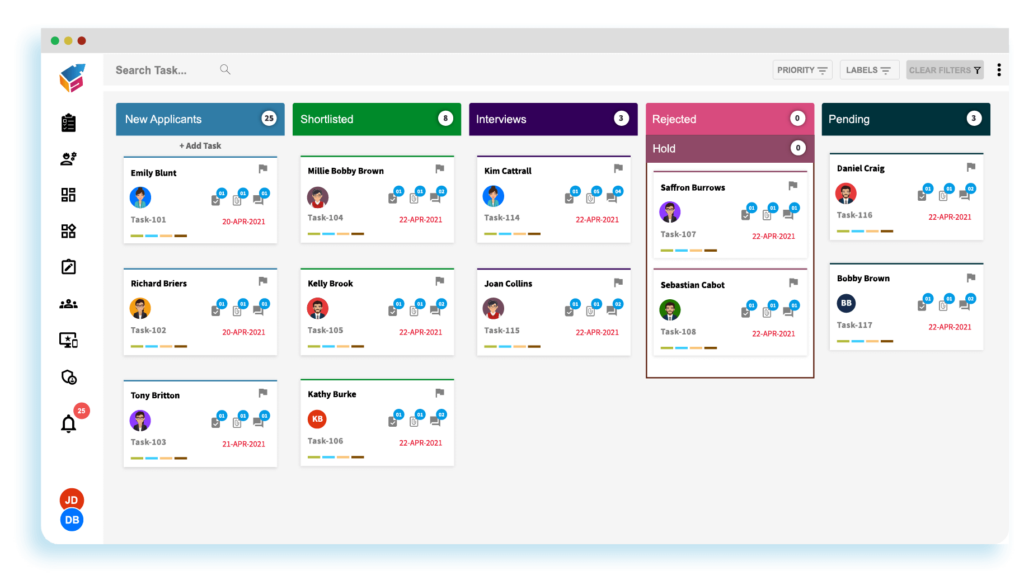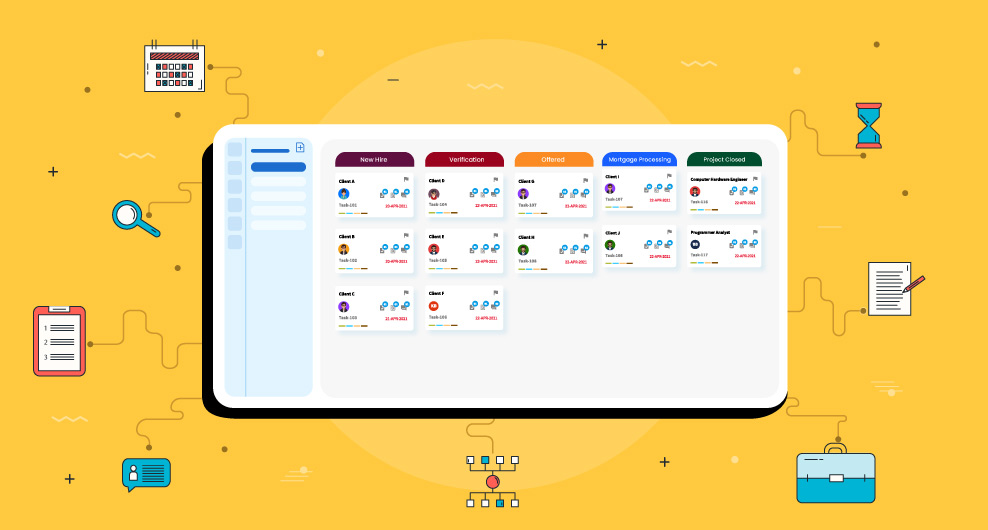Table of Contents
A pervasive element across diverse businesses, irrespective of their industry, scale, market presence, or location, is the inevitability of change. Forecasting consumer and market trends, economic shifts, employee attitudes, and customer behavior poses a considerable challenge.
Simultaneously, businesses must ascertain that their teams comprise individuals equipped to navigate forthcoming changes. How can this be achieved? Through proficient human resource planning, businesses can proactively predict their staffing requirements and prepare themselves for upcoming challenges.
What is human resource planning?
Human resource planning (HRP) is a strategic process that involves forecasting an organization’s future workforce needs and ensuring it has the right people with the appropriate skills and capabilities to meet those needs. The goal of human resource planning is to align the organization’s human capital with its overall business objectives. This involves analyzing current workforce capabilities, identifying gaps in skills or personnel, and developing strategies to address these gaps.
Effective human resource planning is crucial for organizations to adapt to dynamic business environments, optimize workforce productivity, and achieve long-term success. It helps ensure that the right people are in the right positions at the right time, contributing to the overall strategic goals of the organization.
Why is human resource planning important?
Human resource planning is important for several reasons, as it plays a crucial role in helping organizations align their workforce with their overall strategic goals. Here are some key reasons why human resource planning is considered essential:
- Anticipating Workforce Needs: Human resource planning enables organizations to forecast their future workforce requirements. By understanding the skills and personnel needed to achieve business objectives, companies can proactively address staffing needs and avoid talent shortages.
- Strategic Alignment: It ensures that the human capital within an organization is aligned with its broader business strategy. This alignment is vital for achieving organizational goals and maintaining competitiveness in the market.
- Optimizing Workforce Productivity: By analyzing the current workforce and identifying skill gaps, organizations can implement training and development programs to enhance employee skills. This optimization leads to increased productivity and efficiency.
- Succession Planning: Human resource planning includes succession planning, which is crucial for identifying and developing internal talent to fill key roles when they become vacant. This proactive approach ensures a smooth transition and continuity in leadership.
- Cost Efficiency: Effective human resource planning helps control labor costs by avoiding overstaffing or understaffing. It ensures that the organization has the right number of employees with the necessary skills, minimizing unnecessary expenses.
- Adapting to Change: In today’s dynamic business environment, change is constant. Human resource planning enables organizations to be agile and adapt to changes in the industry, market conditions, technology, and other external factors.
- Recruitment and Retention: It aids in developing strategic recruitment plans to attract top talent. Simultaneously, it helps identify strategies to retain valuable employees, reducing turnover and associated recruitment costs.
- Employee Development: Human resource planning emphasizes employee development by identifying skill gaps and providing training opportunities. This not only benefits individual career growth but also contributes to the organization’s overall growth.
- Legal Compliance: It ensures that organizations comply with labor laws, regulations, and ethical standards in workforce management. This helps mitigate legal risks and promotes a positive organizational culture.
- Enhancing Employee Engagement: By aligning employees with organizational goals and providing opportunities for growth, human resource planning contributes to higher levels of employee engagement and satisfaction.
Human resource planning is a strategic process that enables organizations to optimize their workforce, respond to changes, and ensure that they have the right talent in the right positions to achieve their objectives. It is an integral part of overall business planning and contributes to the long-term success of an organization.
Steps for human resource planning
Human resource planning involves steps to ensure effective alignment of the workforce with organizational goals. Here are the key steps in the human resource planning process:
Environmental Scan:
- Internal Analysis: Assess the current workforce’s skills, capabilities, and performance. Identify key employees, their strengths, and areas for improvement.
- External Analysis: Analyze external factors such as economic trends, industry changes, technological advancements, and demographic shifts that may impact workforce planning.
Define Organizational Objectives:
- Clearly articulate the organization’s short-term and long-term business objectives. Understand the strategic goals that the workforce needs to support.
Forecast Future Workforce Needs:
- Predict the future demand for human resources based on business growth, changes in technology, market trends, and other relevant factors.
- Consider factors like employee turnover, retirements, expansions, contractions, and new projects.
Skills Inventory:
- Develop a comprehensive inventory of the skills and competencies currently available within the organization.
- Identify any gaps between existing skills and those required for future roles.
Gap Analysis:
- Compare the skills and competencies required for future roles with the skills inventory. Identify areas where there are shortfalls or excesses in skills.
- Determine the extent of the gap and prioritize areas for improvement.
Succession Planning:
- Identify key positions within the organization and potential successors for those positions.
- Develop plans for grooming and developing internal talent to ensure a smooth transition when key positions become vacant.
Hiring Strategies:
- Develop strategies for recruiting new talent to fill skill gaps and meet future workforce needs.
- Consider both internal and external recruitment methods, including promotions, transfers, and external hiring.

Training and Development Programs:
- Implement training programs to enhance the skills and knowledge of existing employees.
- Focus on addressing identified skill gaps and preparing employees for future roles.
Implement Recruitment and Development Plans:
- Execute the recruitment and development strategies developed in the previous steps.
- Monitor the progress and effectiveness of these plans.
Monitor and Evaluate:
- Continuously monitor and evaluate the effectiveness of the human resource planning initiatives.
- Adjust plans as needed based on changes in the internal or external environment.
Adapt to Changes:
- Be flexible and responsive to changes in business conditions, market dynamics, or other factors that may impact workforce planning.
- Update plans accordingly to ensure ongoing alignment with organizational goals.
Legal Compliance:
- Ensure that all human resource planning activities comply with relevant labor laws, regulations, and ethical standards.
By following these steps with human resource management software, organizations can create a robust human resource planning process that helps them anticipate, manage, and optimize their workforce to meet current and future business needs.
By integrating these suggestions into their comprehensive human capital strategy, organizations can guarantee the alignment of their workforce with business objectives. This approach ensures better readiness to tackle upcoming workforce challenges and seize opportunities.
A meticulously designed and effectively executed HR planning process stands as a pivotal catalyst for organizational success.




